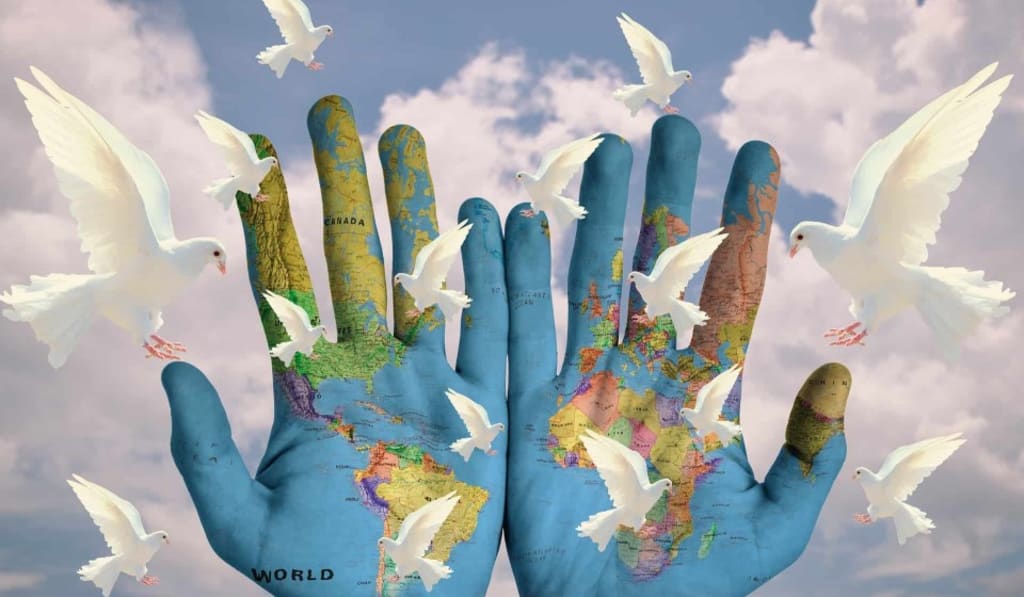
In the intricate tapestry of global affairs, the threads of peace and war are interwoven, shaping a complex pattern that reflects the current state of the world. Today, every nation is engaged in this delicate dance, balancing their aspirations for harmony with the grim realities of conflict. This 800-word article seeks to unravel the nuances of peace and war in contemporary times, highlighting how countries are navigating this challenging landscape.
Peace, an aspiration as old as humanity itself, continues to be the ultimate goal for nations around the world. It's the bedrock upon which societies are built, the environment in which economies thrive, and the condition for human flourishing. The quest for peace is evident in the efforts of international diplomacy, the formation of alliances, and the initiation of various peacekeeping missions. In the aftermath of the devastating world wars, global institutions like the United Nations were conceived with the primary objective of maintaining international peace and security.
Despite these noble endeavours, the world remains haunted by the spectre of war. Regional conflicts, civil unrest, and international disputes have shown that the path to peace is fraught with obstacles. The nature of warfare itself has evolved, transcending traditional battlefields. Today, nations face asymmetric warfare, cyber conflicts, and proxy wars, presenting new challenges for peace and security.
The contemporary global scenario is a mosaic of peace and conflict. While some regions enjoy unprecedented levels of stability and collaboration, others are marred by violence and chaos. The ongoing conflicts in Syria, Yemen, and the persistent tensions in places like Ukraine and the South China Sea stand as reminders of the world's fragility. These conflicts not only cause immediate human suffering but also have long-term implications for global peace and stability.
In addition to physical confrontations, the digital realm has emerged as a new frontier of conflict. Cyber warfare, disinformation campaigns, and the weaponization of social media have become tools in the arsenal of modern warfare. These tactics blur the lines between war and peace, often causing disruptions that can be as devastating as conventional warfare.
Preserving peace in this complex environment requires a multifaceted approach. It is not enough to simply avoid war; nations must actively foster conditions that encourage harmony. This involves addressing the underlying causes of conflict, such as poverty, inequality, and injustice. Education plays a crucial role in this endeavour, equipping future generations with the values of tolerance, empathy, and conflict resolution.
International institutions also play a pivotal role in maintaining global peace. They must evolve to address the changing nature of conflicts effectively. The tools at their disposal, such as peacekeeping operations, diplomatic engagements, and economic sanctions, need to be deployed judiciously to prevent and resolve disputes. However, these institutions themselves require reforms to ensure that they remain effective and representative in the 21st century.
In parallel, the role of non-governmental organizations and civil society is increasingly significant. These entities often operate at the grassroots level, promoting peace through community engagement, humanitarian aid, and advocacy. They serve as bridges between conflicting parties and provide platforms for dialogue and reconciliation.
The path to peace also involves the responsible use of technology. In an age where information can be weaponized, it is imperative to promote digital literacy and critical thinking. Governments, tech companies, and users must collaborate to combat misinformation and cyber threats, safeguarding the integrity of digital spaces.
Moreover, the concept of peace extends beyond the absence of war. It encompasses social justice, environmental sustainability, and human rights. These elements are interconnected, and neglecting any one of them can lead to unrest and conflict. Therefore, a holistic approach that considers the broader implications of policies and actions is essential for sustainable peace.
In conclusion, the struggle between peace and war is a defining feature of our times. It is a struggle that every country faces, regardless of its size, wealth, or power. The challenges are significant, but so are the opportunities. The threads of peace, woven by the collective efforts of nations and individuals, have the potential to create a tapestry of harmony and prosperity. It requires persistence, innovation, and a shared commitment to the common good. As we navigate through these complex times, let us remember that peace is a journey, not a destination. It is a journey that we must undertake together, with hope and determination, to create a world where the shadows of war are dispelled by the light of understanding and cooperation.
About the Creator
NS
I am a Passionate writer and avid researcher, I am blending extensive reading into creative narratives, enlightening and captivating with each carefully crafted word.






Comments
There are no comments for this story
Be the first to respond and start the conversation.